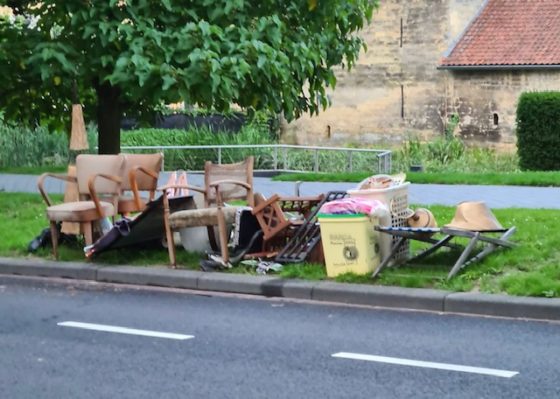Counting the cost of the Limburg floods to families and to wildlife


Some 700 families from the Limburg town of Valkenburg need temporary accommodation because they cannot yet go home following last week’s floods.
In total, 2,300 homes in the town near Maastricht suffered flood damage and need to dry out, a process which will take two to three months. Some 900 tonnes of ruined furniture, clothing and other household goods have been picked up by waste collectors, the town’s mayor Daan Prevoo told Radio 1 news.
‘Everything is a mess,’ Harie Dreesens, whose home had several metres of water in it, told DutchNews.nl at the weekend.
People all over the country have come forward to offer accommodation, but most people want to say in the locality, Prevoo said. Some, for example, are being put up in holiday parks.
The total bill for damages is likely to be around €400m, Prevoo said.
The clean-up operation from the floods is likely to take months, given the amount of rubbish which the river has dumped as water levels go down.
Ecologists are also warning that the floods have had a devastating effect on wildlife, from insects to small mammals and breeding birds. ‘It may take years until nature has recovered,’ Jaap Dirkmaat, of the Dutch landscape body VNC told news website Nu.nl.
In particular, the flood waters have stripped off the top layer of sediment in the river, where water insects breed.
Pollution
The Limburg floods are also likely to have added to pollution in the Maas because so much plastic and other waste was swept away in the swollen river. Experts from Wageningen University have now begun monitoring the pollution and will follow it to see where it ends up.
‘Experience shows that the waste usually shows up in the nature reserves we all love, such as the Biesbosch,’ Tim van Emmerik told broadcaster NOS.
Plastic, for example, gets caught on vegetation and on the river banks where it can be cleaned up. But Van Emmerik said he is concerned a lot of waste will end up in hard to reach areas where it will degrade into microplastics, which will impact on biodiversity for decades to come.
Transport ministry experts are also concerned about the damage to sluices and weirs and the damage to pleasure boats. The Maas river, a spokesman said, is still not safe. ‘Everything is floating around, from trees to complete caravans,’ he said. ‘You have no idea what is drifting around in the water.’
Meanwhile, the army has been drafted in to clear up sandbags used to keep the water at bay and to help officials inspect dykes for possible weak spots.
Thank you for donating to DutchNews.nl.
We could not provide the Dutch News service, and keep it free of charge, without the generous support of our readers. Your donations allow us to report on issues you tell us matter, and provide you with a summary of the most important Dutch news each day.
Make a donation